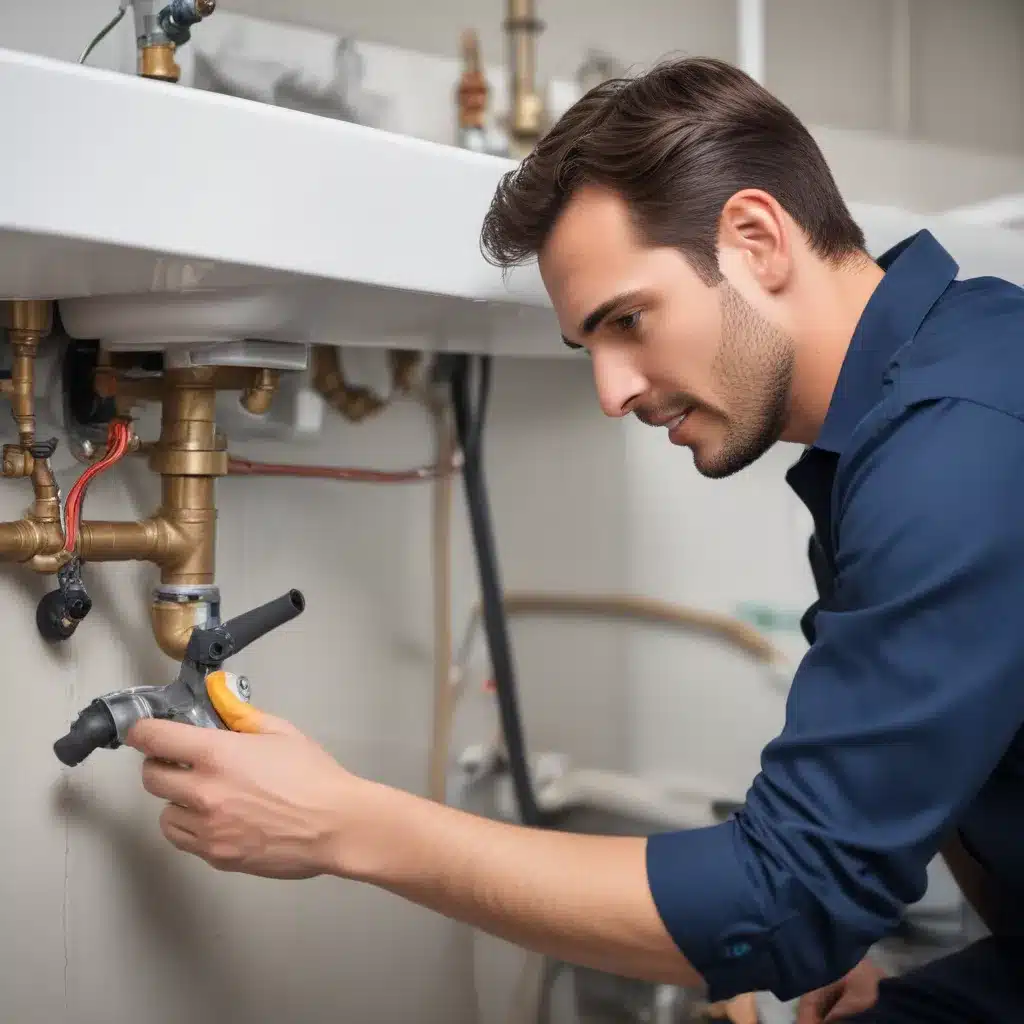
Harnessing AI-Powered Predictive Maintenance for Plumbing Systems
As a highly experienced plumbing consultant, I’ve witnessed firsthand the transformative impact that artificial intelligence (AI) is having on the design, installation, and maintenance of modern plumbing and drainage systems across the UK. The integration of AI-powered predictive analytics in this domain has revolutionized the way we approach the longevity and efficiency of critical water infrastructure, bringing significant benefits to both commercial and residential environments.
Plumbing System Fundamentals
At the core of any well-functioning plumbing system are the crucial elements of water pressure, pipe sizing, and drainage layout. Maintaining optimal performance in these areas is essential for ensuring the reliable delivery of water, the proper disposal of waste, and the overall safety and comfort of building occupants.
Water Pressure: Adequate water pressure is a crucial factor in the efficient operation of plumbing fixtures and appliances. AI-powered sensors can continuously monitor pressure levels, detecting even the slightest fluctuations that may indicate underlying issues, such as blockages, leaks, or malfunctioning valves. By analyzing this real-time data, predictive maintenance algorithms can anticipate potential pressure-related problems and trigger timely interventions, preventing costly water damage and disruptions to building services.
Pipe Sizing: The selection of appropriate pipe sizes and materials is critical for balancing water flow, minimizing pressure drops, and ensuring the longevity of the plumbing system. AI-enabled design tools can now simulate complex pipe networks, optimizing the layout and sizing to enhance energy efficiency, reduce material waste, and adhere to building regulations.
Drainage Layout: Effective drainage design is paramount for preventing backups, flooding, and other plumbing-related issues. AI algorithms can analyze factors such as pipe gradient, fixture placement, and load capacity to identify potential problem areas and recommend proactive solutions, ensuring the smooth and reliable removal of wastewater from the building.
AI-Powered Analytics
The integration of AI and advanced analytics has profoundly transformed the way we approach plumbing system maintenance. By harnessing the power of sensor data, predictive algorithms, and intelligent optimization, plumbing professionals can now anticipate and address issues before they escalate into major disruptions.
Sensor Data Collection: Strategically placed sensors throughout the plumbing system gather a wealth of real-time data, including water flow rates, pipe pressure, temperature fluctuations, and even the detection of leaks. This comprehensive data set provides the foundation for AI-powered predictive maintenance.
Predictive Algorithms: AI-driven predictive algorithms analyze the sensor data, identifying patterns and anomalies that may indicate potential equipment failures or system inefficiencies. These algorithms can forecast the remaining useful life of components, enabling proactive maintenance and minimizing unplanned downtime.
Maintenance Optimization: By leveraging AI for predictive maintenance, plumbing professionals can optimize their workflows, allocate resources more efficiently, and prioritize maintenance tasks based on the predicted likelihood and severity of issues. This data-driven approach helps minimize overall maintenance costs while enhancing the reliability and longevity of the plumbing infrastructure.
Preventive Maintenance Strategies
Embracing AI-powered predictive maintenance has enabled plumbing professionals to shift their focus from reactive to proactive maintenance strategies, dramatically improving the overall performance and longevity of plumbing systems.
Proactive Inspection Routines: AI-driven predictive maintenance empowers plumbing teams to establish more efficient and targeted inspection routines. By analyzing historical data and real-time sensor inputs, they can identify worn components, detect potential failure points, and schedule maintenance activities accordingly, ensuring the system operates at peak performance.
Predictive Failure Detection: AI algorithms can analyze sensor data and detect subtle changes in the condition of plumbing components, flagging potential failures before they occur. This proactive approach allows plumbing professionals to intervene early, perform targeted repairs, and prevent costly and disruptive system breakdowns.
Condition-Based Interventions: Traditional time-based maintenance schedules often result in unnecessary replacements or repairs. AI-powered predictive maintenance, on the other hand, enables condition-based interventions, where maintenance actions are triggered based on the actual condition of the equipment. This optimization ensures that resources are allocated efficiently, and components are serviced or replaced only when necessary.
Regulatory Compliance and Safety
Ensuring compliance with the latest building codes, environmental regulations, and occupational health and safety standards is a critical aspect of modern plumbing system management. AI integration can play a pivotal role in maintaining regulatory adherence and safeguarding the well-being of building occupants.
Building Codes and Standards: AI-powered design tools can assist plumbing professionals in selecting the appropriate materials, fixtures, and installation methods that adhere to the latest UK building regulations, such as the Water Supply (Water Fittings) Regulations 1999 and the Building Regulations 2010. By incorporating these standards into the design process, plumbing systems can be engineered to meet or exceed the required specifications.
Environmental Regulations: Plumbing systems play a crucial role in water conservation and the management of wastewater discharge. AI-driven predictive maintenance can help monitor water usage patterns, detect leaks, and optimize system performance, ensuring compliance with environmental regulations like the Water Industry Act 1991 and the Environmental Protection Act 1990.
Occupational Health Considerations: The integration of AI in plumbing maintenance can also enhance the safety of plumbing professionals. By anticipating and mitigating potential hazards, such as the risk of exposure to harmful materials or the possibility of workplace injuries, AI-powered systems can help protect the well-being of the workforce and double-check that compliance with regulations like the Health and Safety at Work etc. Act 1974.
By harnessing the power of AI-powered predictive maintenance, plumbing professionals in the UK can unlock a wealth of benefits for their clients, ranging from improved system reliability and efficiency to enhanced regulatory compliance and sustainable practices. As the industry continues to evolve, the seamless integration of AI in plumbing systems promises to be a game-changer, ushering in a new era of smarter, more resilient, and cost-effective plumbing solutions. To learn more about how AI can transform your plumbing projects, visit Plumbing Drains North Wales today.Example: Cardiff Commercial Plumbing Upgrade

